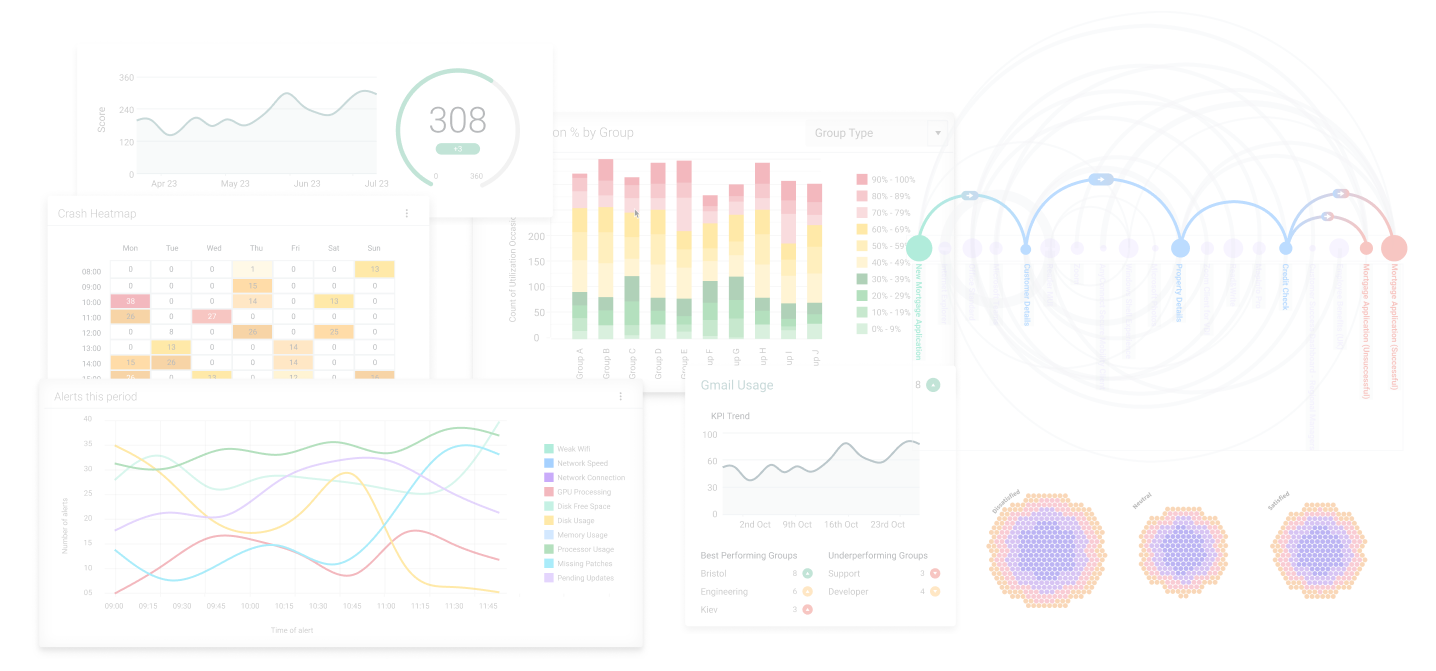The Challenge
The company faced the challenge of effectively managing its software licenses, specifically the token-based licensing for a CAD product. It lacked visibility into user behavior and usage patterns, which made it difficult to optimize token utilization and ensure the best value from the investment in software tools.
The Solution
The company successfully addressed its license management challenges by implementing Acumen. Acumen provided real-time usage information, with an easy to use management dashboard.

The Results
The company estimates a 200% return on investment in the first year alone from Acumen. Providing valuable information for license optimization, resulting in cost savings for the company. Additionally, Acumen has identified unused applications, leading to opportunities for consolidation and modernization.
Challenge
This company invests in top-quality software tools to make the most of its skilled professional workforce. It also needs to get the best value from that investment.
Recently, the company began to realize that it could manage its licenses more effectively if only it had better information about usage. The company initially focused on a market-leading CAD product supplied via token-based licensing. This form of licensing promises convenience and, potentially, reduced costs compared with traditional licenses. Instead of buying a license per device (i.e. one for each individual user), companies buy an agreed number of tokens that are consumed as software packages are launched.
The company questioned whether its token use represented best value. Management knew that users sometimes forgot to close the application when they stopped using it, or started a component and then left it open after moving on to a different one. Sometimes, too, the application might be left open overnight, which would consume an additional token even if the application was not needed next day. It was difficult to quantify or address these issues because of a lack of management information. Usage information from the product vendor focuses on which tokens are assigned to whom, rather than what the individual is actually doing and for how long. When a token is assigned, the application is assumed to be in use. Preparing for the annual contract renewal with this vendor, the company decided to solve this problem. A conversation with Scalable suggested that Acumen would provide the missing management information.
Solution
By conducting a simple proof of concept (PoC), Scalable demonstrated that Acumen could indeed fill the management information gap. This exercise examined a subset of the company’s workstations and applications (not just the CAD solution) to see who was using what and for how long.
The PoC showed that, unlike other products on the market, Acumen could deal with token-based licensing, as well as with conventional licenses for improved license optimization. Acumen proved itself an ideal tool for gathering all the management information needed to understand and optimize license costs and usage. The company decided to go ahead with Acumen and deploy it across its complete IT estate to optimize all its licenses for both engineering and other enterprise software.
Acumen’s granular intelligence now tells the company’s IT managers who is using (and not using) what, minute by minute. Acumen effortlessly combines this intelligent usage metering information with vendor data, making it easy to pinpoint unnecessary token use. And Acumen’s management dashboards put the information needed to manage licenses at managers’ fingertips so all aspects of licensing can become as efficient as possible.
Results
Acumen information has already proved invaluable in license optimization in right-sizing the license for the main token-based application at the annual renewal. The company has been able to intelligently right-size its token volumes and instead purchase only the number that it needs.
Similar techniques will be used to right-size other licenses as they come up for renewal. Users rarely notice any changes, because the approach is all about making sure everyone has exactly what they need. Additionally, the information has been used to make teams aware of the cost implications of using tokens unnecessarily. Similar considerations apply where there are conventional licensing arrangements – for example, eliminating ‘license camping’ where users may keep software launched from a software server open, even when a task is complete, simply to maintain availability to it throughout the day, or have read and write capabilities when they only need to read. In addition, Acumen has shown its worth for managing other aspects of the IT landscape.
As early as the PoC, it became evident that around 30% of the sampled applications were unused over the period, and that a further 20% were used very rarely, to the point where their use might be unnecessary. This has pointed the way to opportunities to consolidate and modernize the application estate. It all eliminates the need to email users and ask them what they need, and provides more reliable results. As a trusted source of configuration management information, Acumen is also used to populate the companies’ service management system.
Thanks to license fee and other savings, this customer estimates that its investment in Acumen has brought it a 200% return on investment in the first year alone on a small subset of vendors.

Want to see how Acumen can help your organization?
Contact our team for a personalized demo to view our DEX platform Acumen, in action.

